
Science through Technology Enhanced Play (STEP)
GEM-STEP Example Models
Each sequence of GEM-STEP models is developed to give learners a series of experiences where they can explore and unpack the complex mechanisms within specific scientific phenomena. In many cases, we also design our models to help students explore cross-cutting concepts such as the flow of energy as they move between models.
Below are some of the models we’ve implemented.
Honeybee Environment Models (BeeVR)
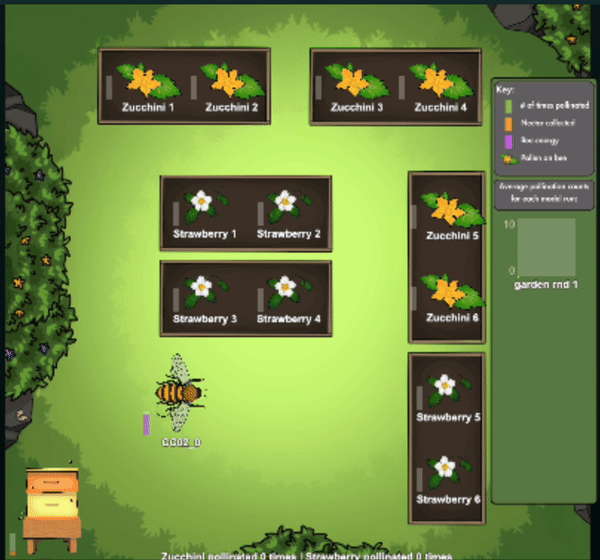 Garden Environment Garden Environment |
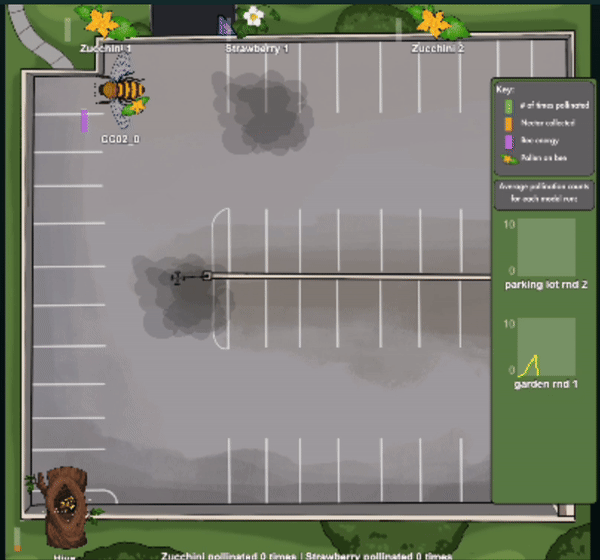 Parking Lot Environment Parking Lot Environment |
This model was created as part of a Food Justice unit that was developed to help learners explore the value of local fresh food in their community. Learners have been asked to help the local mayor decide whether an empty field should be made into a community garden or a parking lot. In this GEM-STEP model, the learners take on the role of bees collecting nectar in either a garden or a parking lot to help them see how pollination and bee health are impacted by these two environments.
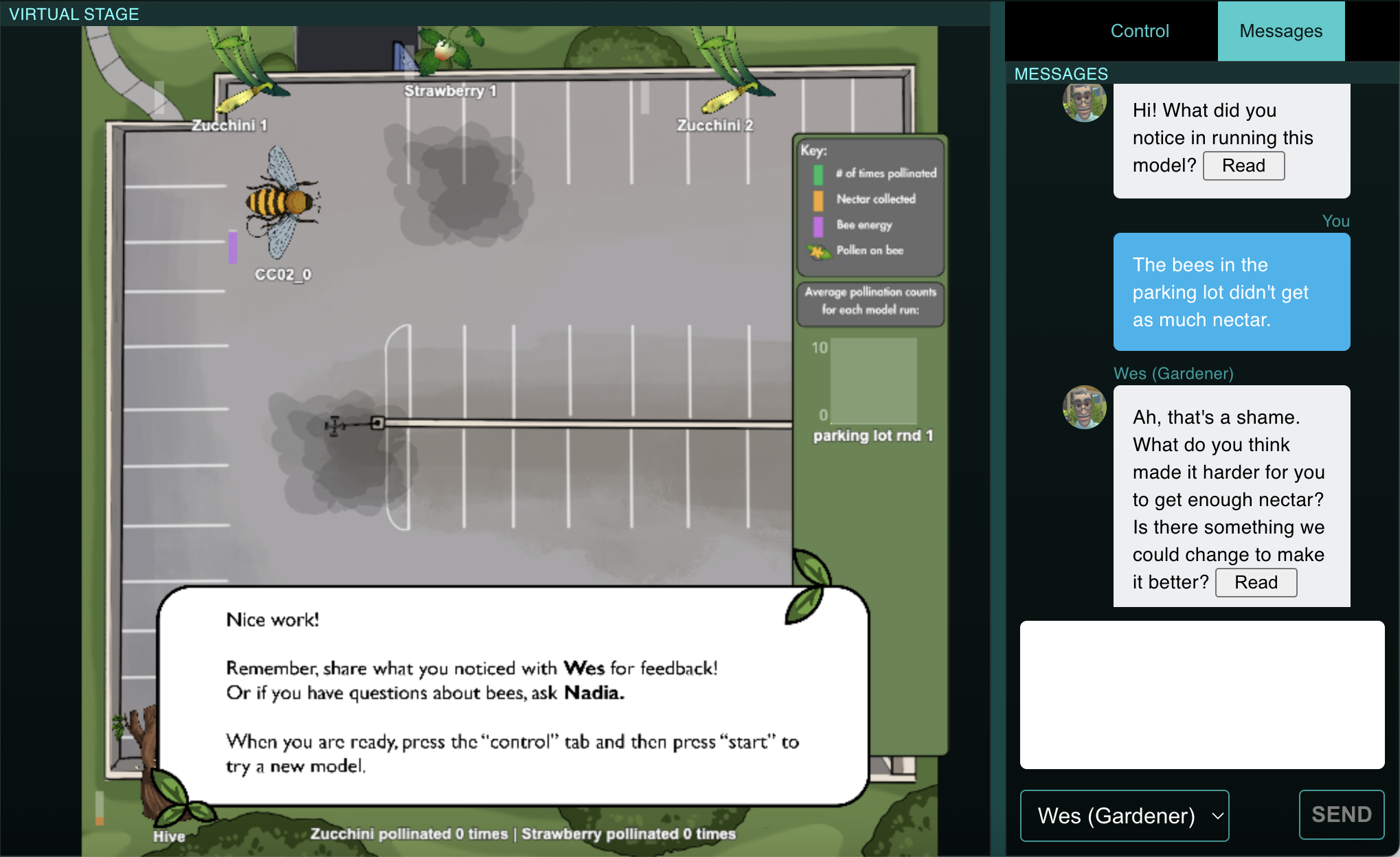 Conversation Agent For Supporting Inquiry Conversation Agent For Supporting Inquiry |
This is also the first model where we explicitly incorporated a conversational agent intended to help the learners share what they notice with a character who then offers some hints as well as suggestions for how to continue in their inquiry. The name BeeVR is what the model is referred to as in the Food Justice game.
Role of Embodiment
The ease of moving quickly around the garden, and having to move further and in a more complex route in the parking lot is intended to help make the differences salient to learners.
Beavers and Wetland Ecosystem Models
 Beaver Interactions Beaver Interactions |
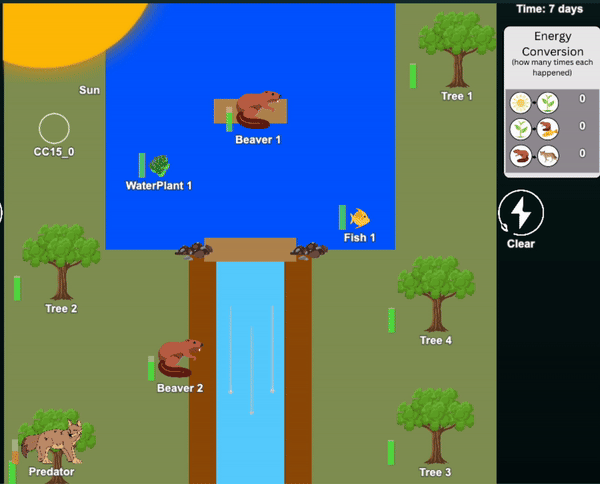 Beaver Energy Beaver Energy |
Learners immerse themselves into our dynamic models of a wetland ecosystem, gaining a fascinating insight into the remarkable ways beavers transform their surroundings. In the first model, learners adopt the role of a beaver, collecting materials to build a dam. The ‘Beaver Energy Model’ serves as the second model, shedding light on the energy flow within the ecosystem.
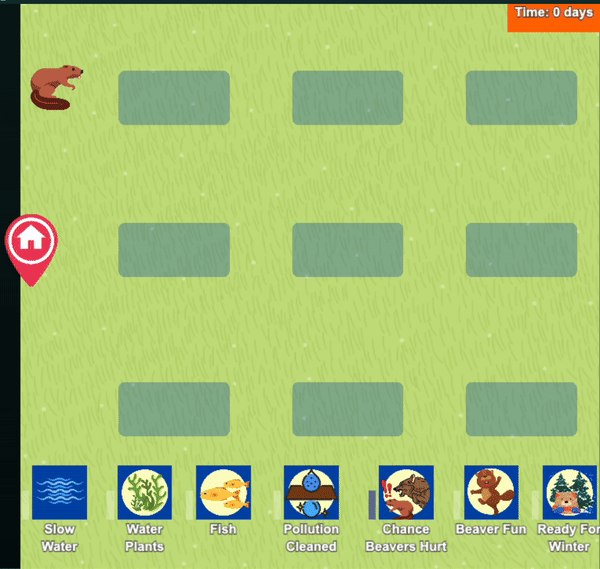 Beaver Sequence Beaver Sequence |
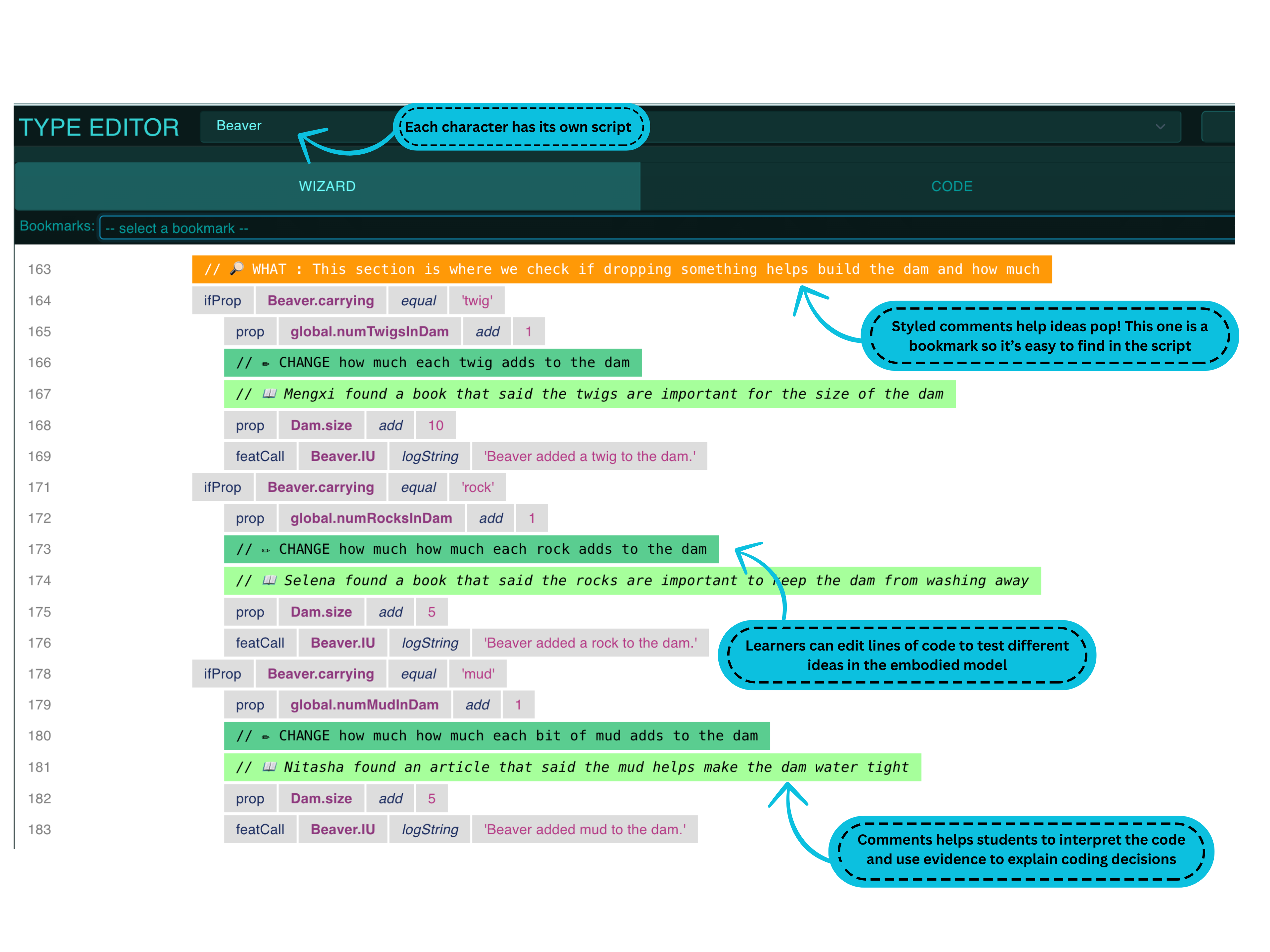 Beaver Scripting Beaver Scripting |
Our third model, the ‘Sequence Model’, emphasizes the far-reaching impact of beaver activities on the ecosystem. In all of these models, learners can also focus on key variables by editing the underlying script. Across these models, learners have the opportunity to understand the profound influence of a beaver’s dam building, as it deepens streams, fostering a more diverse habitat for fish and plant growth.
Role of Embodiment
By taking on the role of the beavers, we believe learners will appreciate how the need to shape the environment for food and protection leads to other impacts, including opportunities for fish and plants to grow. Moving within the energy model is meant to help reorient learner attention toward the flow of energy from the sun, to plants, to consumers like the beavers. Finally, making individual choices in the sequence model is meant to help reinforce these relationships and connect specific behaviors to more distal environmental impacts.
Aquatic Pond Ecosystem Models
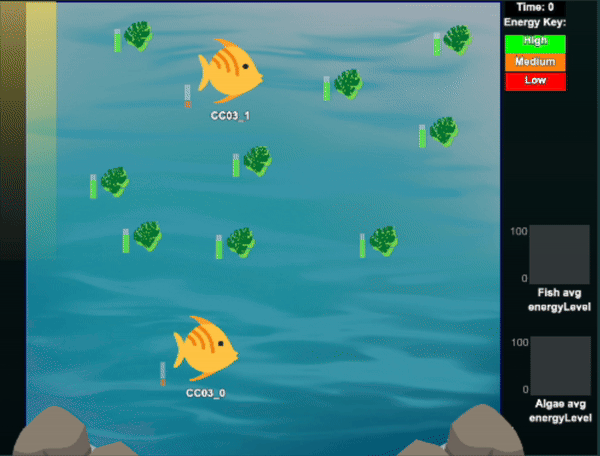 Interaction Model Interaction Model |
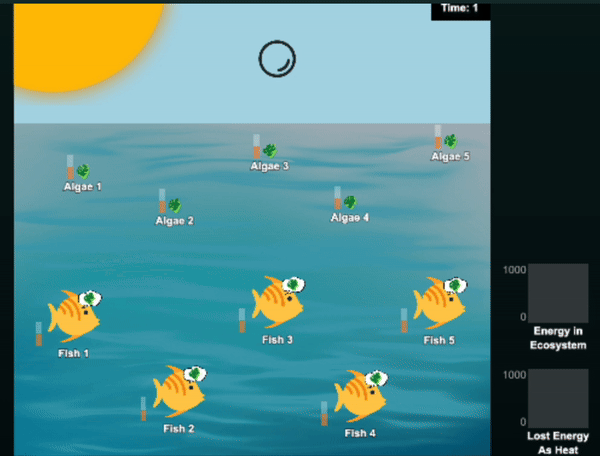 Energy Model Energy Model |
In the Pond Interaction Model, learners act as a fish eating algae. To help learners see the interdependencies in the system, if they eat all of the algae, the algae won’t come back and the fish eventually die. However, if they space out their eating, the algae grow back when the sunlight touches them. The Aquatic Energy Model helps highlight this flow of energy from the sun, to algae (producers), to fish (consumers). By popular request from learners, we can also add a turtle to the Pond Interaction Model in later runs. The turtle can be an herbivore, carnivore, or omnivore to help further highlight interdependencies.
Role of Embodiment
In the interaction model, learners are encouraged to explore how their behavior as fish impacts the algae, and to discuss how to model realistic fish that don’t simply eat non-stop, play-acting activities like resting, avoiding predators, and searching for food. Moving within the energy model helps highlight both the relationships in the ecosystem, the directional flow of mass and energy within, and the cyclical nature of these processes. This is also meant to pair with the Garden Ecosystem Models.
Sample Publications
- Danish, J., Anton, G., Mathayas, N., Jen, T., Vickery, M., Lee, S., Tu, X., Cosic, L., Zhou, M., Ayalon, E., Steinberg, S., Enyedy, N., & Ryan, Z. (2022). Designing for Shifting Learning Activities. The Journal of Applied Instructional Design, 11(4). paper
Garden Ecosystem Models
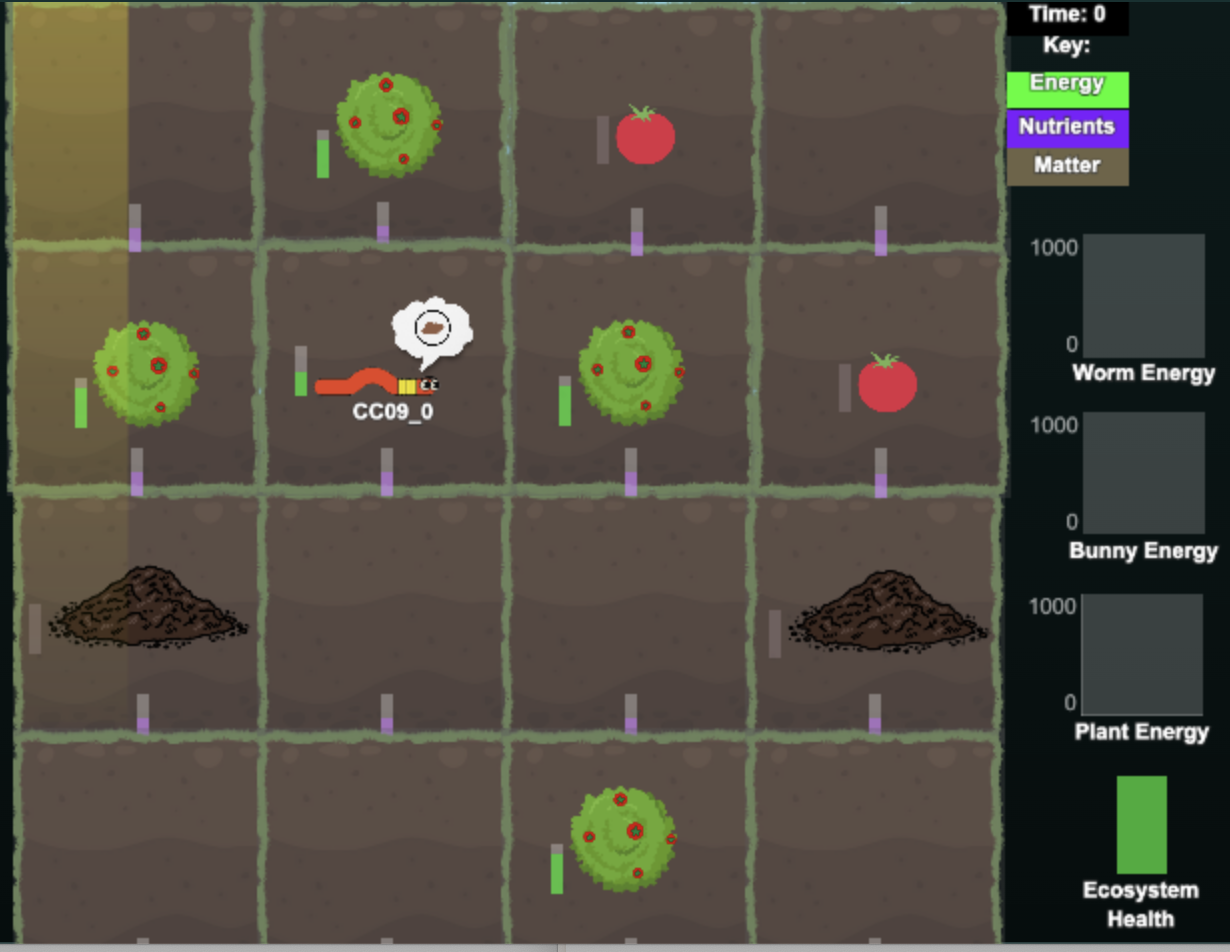 Interaction Model Interaction Model |
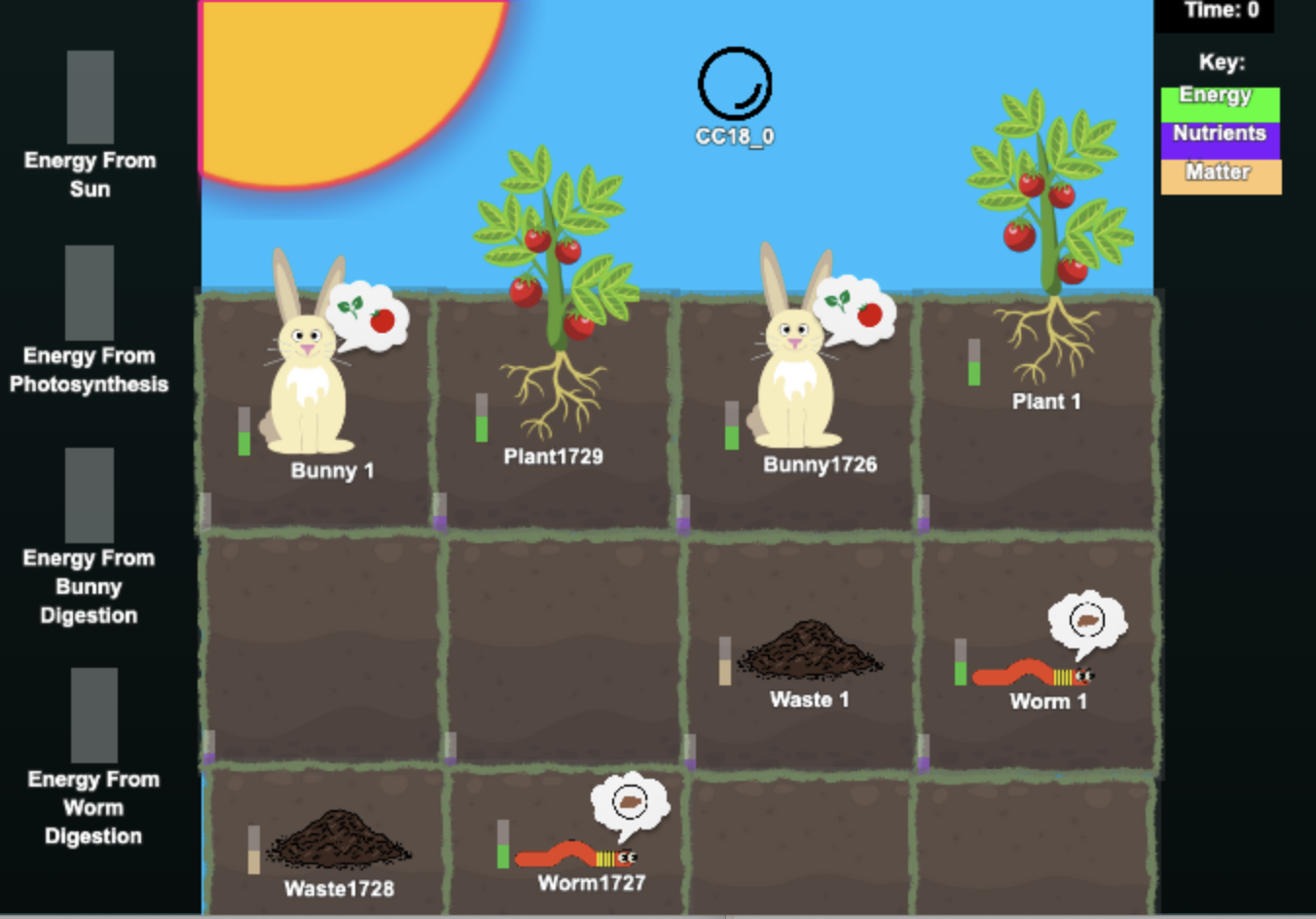 Energy Model Energy Model |
The Garden Ecosystem Interaction model was designed to be explored after learners already worked with the Pond Ecosystem Model. It is similar, but slightly more complex (it has more agents and interactions), intended to help promote transfer and an awareness of some general properties of ecosystems. Learners can either act as worms or bunnies in an ecosystem where the sun leads to plant growth, and bunnies (consumers) eat the plants and then eventually defecate. Worms consume organic waste to produce nutrients, which can help the plants grow. The garden ecosystem energy model is similar to the pond energy model, helping learners to see how energy and matter flow through the system.
Role of Embodiment
In the interaction model, learners use their bodies to help model the process of consuming and moving throughout the system, helping them see how the different organisms all play a role and are dependent on each other. In the Garden Energy Model, they again move in a more cyclical manner, helping to reinforce the pattern of movement of energy and matter in the system.
Sample Publications
- Danish, J., Anton, G., Mathayas, N., Jen, T., Vickery, M., Lee, S., Tu, X., Cosic, L., Zhou, M., Ayalon, E., Steinberg, S., Enyedy, N., & Ryan, Z. (2022). Designing for Shifting Learning Activities. The Journal of Applied Instructional Design, 11(4). paper
Doing Science Model
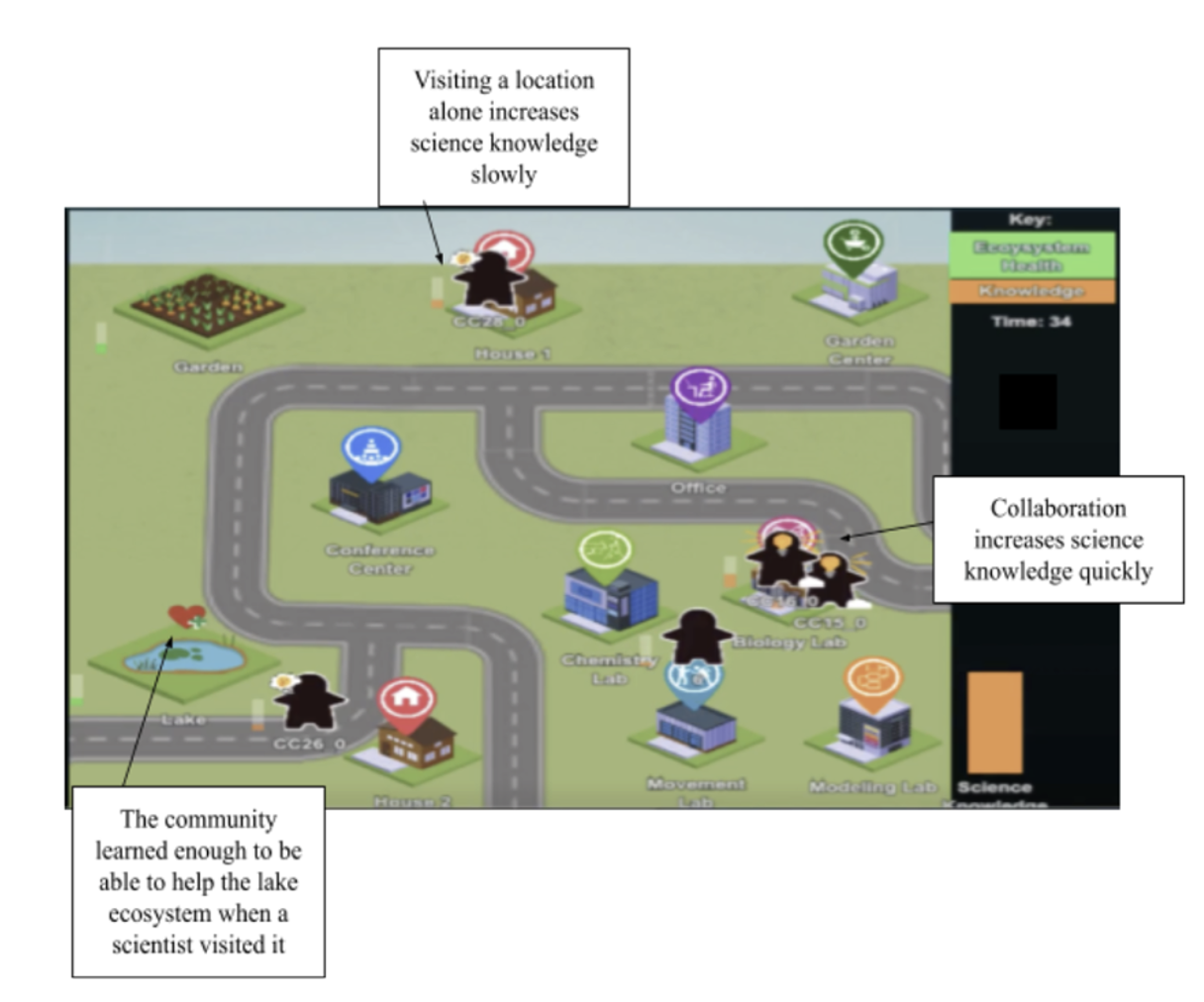 Doing Science Model Doing Science Model |
The Doing Science Model was designed to allow learners to explore their ideas around what it means to be a scientist and to do science. As part of the lesson, learners controlled scientist avatars and had to decide where to go and what to do at each location in order to learn about and help garden and pond ecosystems. In the model, the scientists built knowledge slowly alone, but quickly when they collaborated with another scientist.
Role of Embodiment
This model introduced a place-based model of science, intended to help learners appreciate that science can be done in many places, including homes, garden centers, labs, and conference centers. By taking on the perspective of a scientist, learners were able to imagine what it might be like to be one, through negotiating where to visit and why with their peers, and seeing how their actions improved the scientists’ collective knowledge and the health of the ecosystems.